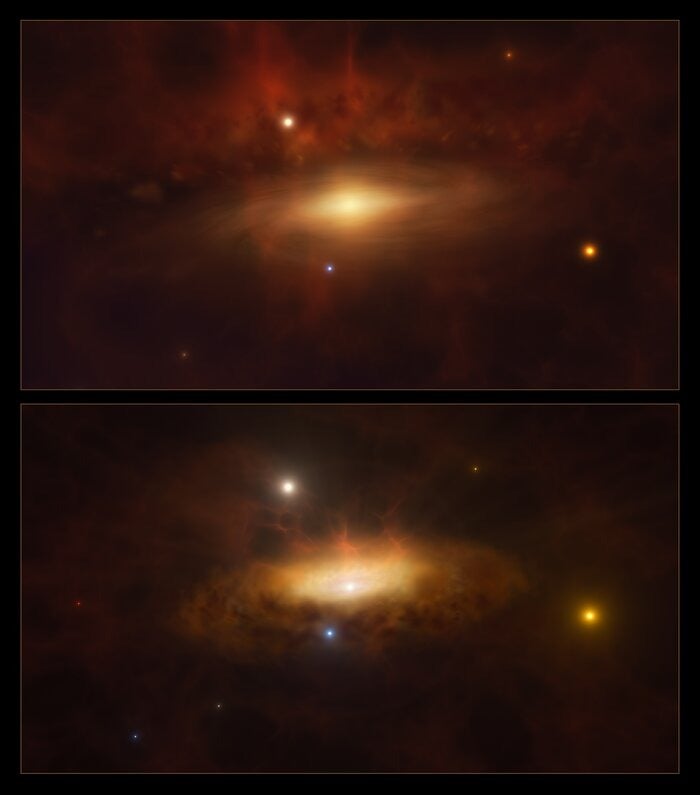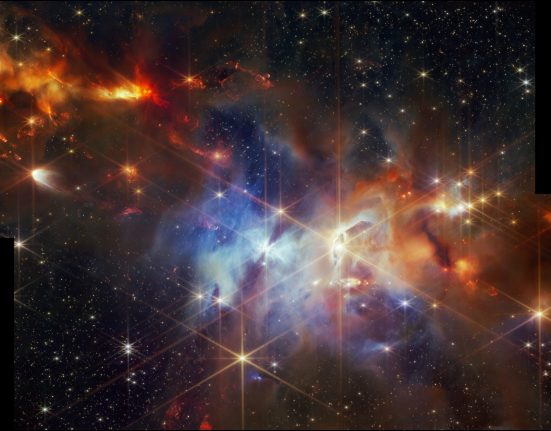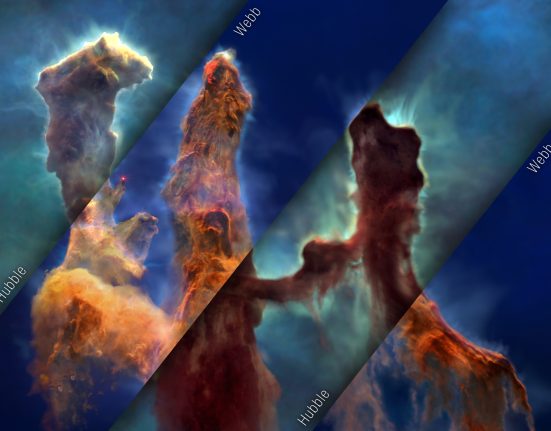The renewed energy flowing from an active galaxy provides astronomers with a high-energy mystery to explore in detail at multiple wavelengths.

This artist's impression shows two stages in the formation of a disk of gas and dust around the enormous black hole at the center of the galaxy SDSS1335+0728. The core of this galaxy lit up in 2019 and continues to shine today – the first time we've observed a massive black hole activate in real time. Credit: ESO/M. Kornmesser.
At the center of the average galaxy 300 million light years away, something just happened that has astronomers on the edge of their seats. Suddenly, a supermassive black hole inhabiting the center of a distant galaxy has come to life.
The galaxy, SDSS1335+0728, is nothing special, and even the supermassive black hole at the center has an average mass, about 10 million times that of the Sun. But a new research paper on the galaxy, published in Astronomy and Astrophysicscould provide key information about supermassive black holes and why they occasionally come back to life.
“At this moment we are not sure of the explanation, but there are different options that we are using to explain the data,” says Lorena Hernández-García, a postdoctoral researcher at the Institute of Physics and Astronomy of the University of Valparaíso in Chile.
Supermassive black holes They occasionally experience tidal disruption events. These occur when matter approaches them and cannot escape its gravity, it is slowly torn apart and swallowed. But they typically occur on a time scale of weeks or months, not years, and at some point they should slowly start to dim, while whatever is causing the current event has only gotten brighter. If the current observation represented such an event, “this would be the longest tidal disturbance event ever seen,” says Hernández-García.
Related: Could you survive falling into a black hole? It depends.
Hernández-García proposes that the current observation could represent a natural process in the galaxy, since supermassive black holes can become dormant and reactivate later, but what triggers the process is not well understood. If this is the case, astronomers have the perfect front-row seat to find out.
What can fall into a black hole and wake it up? The event could be caused by a passing star or stars, or by a large gas complex. But in this case, something is happening that is creating a slow and drawn-out process.
Because the current event has lasted so long, astronomers have been able to observe it in different wavelengths of light. For example, astronomers at the European Southern Observatory observed it at optical wavelengths, while others captured it at ultraviolet and X-ray wavelengths, ideal for observing the intense events in the galaxy's core in its most energetic bursts. Just four years after its discovery, changes have already been observed in the X-ray portion of the spectrum, offering a tantalizing mystery.
“The most interesting behavior right now is happening in the X-rays, where we are starting to see the variations that are occurring in the nucleus,” says Hernández-García. “We also received new radio observations that are under analysis. We will have more interesting news soon!













Leave feedback about this